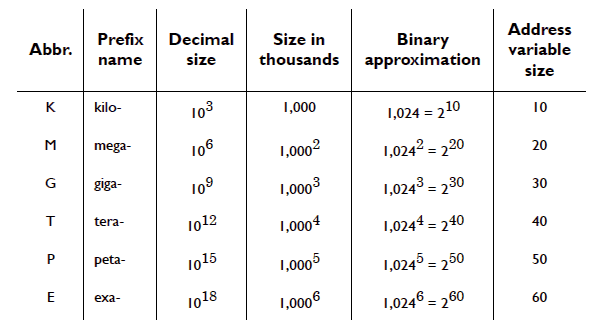
Exploring the Historical Significance of Giga
Introduction
Giga, a term that has become commonplace in our modern digital age, has a rich and intriguing history. From its humble origins to its current widespread usage, Giga has evolved significantly over the years, leaving an indelible mark on society. This article delves into the historical significance of Giga, exploring its origins, evolution, important events, and lasting impact.
The Origins of Giga
The story of Giga begins with its emergence as a prefix derived from the Greek word "gigas," meaning "giant." In the context of technology, Giga denotes a billion units of a specified metric. However, its roots can be traced back to the world of computing.
In the early days of computing, Giga first appeared as a part of the International System of Units (SI). It was initially employed as a multiplier to indicate a factor of 10^9, or one billion. This usage gained prominence in the mid-20th century with the advent of supercomputers and advanced scientific calculations.
Evolution of Giga through the Years
As technology progressed and computational power increased exponentially, the significance of Giga expanded accordingly. The capabilities of early computers were limited, measuring data storage and processing power in kilobytes (KB) and megabytes (MB).
However, in the late 20th century, Giga began to take center stage as advancements in hardware and software pushed the boundaries of what was possible. With the introduction of gigabyte (GB) storage and processing capacities, Giga became a buzzword within the rapidly evolving tech industry.
Historical Background of Giga
To truly understand the historical significance of Giga, it is essential to explore its broader historical context. Giga emerged during a time when computers were transitioning from massive, room-sized machines to portable devices that could fit in the palm of a hand.
As the digital age unfolded, Giga played a crucial role in driving the development of technology. It became the unit of choice to measure data storage, processing speeds, and network bandwidth. This allowed for more efficient data handling, larger storage capacity, and faster computing, further fueling the digital revolution.
Important Events in Giga's History
Throughout its history, Giga has been associated with several pivotal events that have shaped its trajectory. The introduction of the gigabyte hard drive in the late 1980s marked a significant milestone in data storage capabilities, revolutionizing the way information was stored and accessed.
Another notable event was the rapid adoption of broadband internet connections in the early 2000s. The increased bandwidth made possible by Giga-enabled technologies allowed for faster web browsing, seamless video streaming, and improved overall online experiences.
Giga's Timeline
Here is a timeline highlighting key moments in Giga's history:
- 1959: Giga is officially recognized as a prefix in the International System of Units.
- 1987: The first gigabyte hard drive is introduced, marking a major leap in data storage capacity.
- 1998: The emergence of gigabit Ethernet enables faster networking speeds.
- Early 2000s: The widespread adoption of gigahertz processors revolutionizes computing power.
- 2005: Gigabit internet connections become commercially available, transforming online experiences.
Influence of Giga in History
Giga's impact extends beyond simply measuring data and processing power. It has played a prominent role in numerous technological advancements that have shaped our society. The exponential growth in computing capabilities unlocked by Giga has paved the way for groundbreaking developments in various fields.
From graphic design to artificial intelligence, Giga has provided the foundation upon which countless innovations have been built. It has empowered scientists, researchers, and engineers to push boundaries, making previously unimaginable achievements possible.
Giga's Legacy
The legacy of Giga is one of continuous progress and innovation. Its introduction has heralded a new era of computing, transforming the possibilities of technology and pushing the boundaries of human knowledge.
As Giga continues to evolve, its impact will undoubtedly shape future advancements in computing and beyond. The limitless potential of Giga's capacity for data storage, processing power, and network speeds will contribute to the ongoing digital revolution.
Giga's Impact on Society
The impact of Giga on society cannot be understated. It has facilitated the creation of vast digital libraries, enabling the storage and accessibility of vast amounts of information. This has democratized knowledge and opened up new avenues for education, research, and entertainment.
Furthermore, Giga has revolutionized fields such as healthcare, finance, and communication. The ability to process and analyze massive amounts of data quickly and efficiently has led to groundbreaking discoveries in medicine, transformed financial systems, and facilitated real-time global communication.
Significant Moments in Giga's History
Several key moments have shaped the historical significance of Giga:
- The emergence of Giga as a prefix in the International System of Units in 1959.
- The introduction of the gigabyte hard drive in 1987.
- The commercial availability of gigabit internet connections in the mid-2000s.
Each of these moments represents a turning point in the evolution of Giga, further cementing its role as a driving force behind technological progress and societal transformation.
In conclusion, Giga's historical significance lies in its role as a unit of measurement that revolutionized computing and technology. From its origins in early computing to its current status as a fundamental pillar of the digital age, Giga's impact on society cannot be overstated. By facilitating technological advancements, enabling data storage and processing on an unprecedented scale, and transforming how we interact with the world, Giga has left an indelible mark





http://Boyarka-Inform.com/
on How to Watch Football Matches Online: A Comprehensive Guide
14.04.2025, 01:34
http://Boyarka-inform.com/
on Introducing Upload Giga0: The new file sharing website revolutionizing the way you upload files
11.04.2025, 15:42
Https://Menbehealth.Wordpress.Com
on Cómo producir semillas de marihuana feminizada: variedades, beneficios y proceso de feminización
01.03.2025, 21:48
Https://Menbehealth.Wordpress.Com
on Cómo producir semillas de marihuana feminizada: variedades, beneficios y proceso de feminización
01.03.2025, 21:44
https://bandur-art.blogspot.com/2024/08/the-ultimate-guide-to-no-mans-sky-mods.html
on Easy Pancake Recipe: Quick and Delicious Fluffy Pancakes
04.09.2024, 10:29